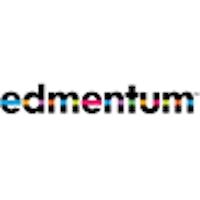Growing up, I received what was largely a one-size-fits-all education; as a result, I struggled to connect academically to this model. Today, I’m amazed at the impact technology can have on the learning process—especially when it enables teachers to personalize learning. And I never tire of hearing stories from educators who are successfully implementing personalized approaches to provide their students a truly unique learning experience.
In my role at Edmentum, I am inspired by these stories daily. One of my favorites is from Kate Wagner, principal of Red Mill Elementary, who says, “We are no longer teaching to the middle.” Another comes from Jeff Silverman, principal of Christa McAuliffe Middle School, who explains that implementing personalized learning ”finally got us over the hurdle we were stuck at . . . Our scores turned around.” What an amazing testament to the power of technology and customized learning for students.
Inspiring stories are most effective when paired with practical resources. The toolkit below is jam packed with new ideas and best practices to help educators everywhere personalize learning for their students. Whether you are new to personalized learning—or a seasoned pro—I hope you’ll find them helpful as you begin the school year. Know that we are cheering you on!
1) How-to Guide—Creating Personalized Learning Plans for Every Student
In our personalized learning plan how-to guide, we discuss 10 actionable steps such as how to appeal to student interests and compile a student profile; define essential components; offer guiding questions; and provide examples to help you build the personalized learning plan that meets your goals, opportunities, and needs.
2) Video - Personalizing Learning at Oregon High School
Learn how Oregon High School in Oregon, Wisconsin uses technology to personalize the learning experience. Hear from teachers, administrators, and students about how they are giving youth a voice in guiding their educational journey to ensure that they are learning at their own pace.
3) Workbook—Online Curriculum How-to Guide
Online curriculum is often a key part of any personalized learning program. This workbook will expand your definition of online curriculum; highlight student and teacher needs and views of implementations; and provide opportunities to help you identify your goals. Whether those goals are online curriculum or credit recovery, this guide will help you determine the best learning environment for your school or district.
4) Blog—Five Steps to Differentiated Instruction
In this blog, we take a deep dive into differentiated instruction by laying out five steps to get you started. Taking a differentiated approach to instruction recognizes that a variety of tactics must be utilized in order to reach every student—benchmarking students, for example, or finding innovative ways to align to standards. Teachers who apply this approach modify the content, the process, and the way students demonstrate learning within their regular instruction.
5) Workbook—Blended Learning: Fundamentals of the Planning Process
This guide has been developed to help you determine the most appropriate blended learning program for your school or district, build a plan for a successful rollout, and navigate the implementation process. It also includes interactive planning worksheets you can use to begin planning your blended learning implementation.
6) Webinar—Blended Learning: Which Model Works For You?
In this webinar we walk through a self-assessment that will allow you to determine which blended learning models can work with specific schedules, resources, goals, spaces, and technology setups. Then we explore the most common blended learning models—Rotation Model and Flex Model—as well as tips for how to implement them successfully.
7) Video - Blended Learning at Red Mill Elementary School
Learn how Red Mill Elementary School in Etters, Pennsylvania is leveraging personalized learning to meet each students’ instructional needs and why students there are saying, “I like it, it’s fun!”
8) Workbook—Virtual Learning: Exploring the Options for Expanded Student Opportunity
This workbook helps teachers and administrators evaluate if a completely virtual implementation is the best option for their school or district. It provides guidance on developing a program and selecting a virtual program partner to ensure that the chosen program will support all facets of learning. It also includes interactive planning worksheets to help plan a virtual learning implementation.
9) Blog—Universal Design for Learning: Powering Personalized Experiences for All Students
Universal Design for Learning (UDL) is a parallel approach similar to personalized learning. In this blog post we provide an in-depth analysis of UDL and why more teachers are considering this option for their classroom. UDL outlines how each student has a variety of skills, needs, and interests they bring to the table when learning; the UDL framework is all about building in options to meet these differences.
10) Blog—How to Evaluate Edtech Tools that Support Teaching & Learning
As the traditional classroom evolves into an environment rich in technology, educators are looking for guidance on how to choose the best educational technology solutions. So we’ve put together a blog of research-based guidelines for choosing edtech tools—from assessment to curriculum software—to use in the classroom.
Personalized learning can make a world of difference to your students. I hope our toolkit will help you choose the approach that best suits the needs of your classroom.



